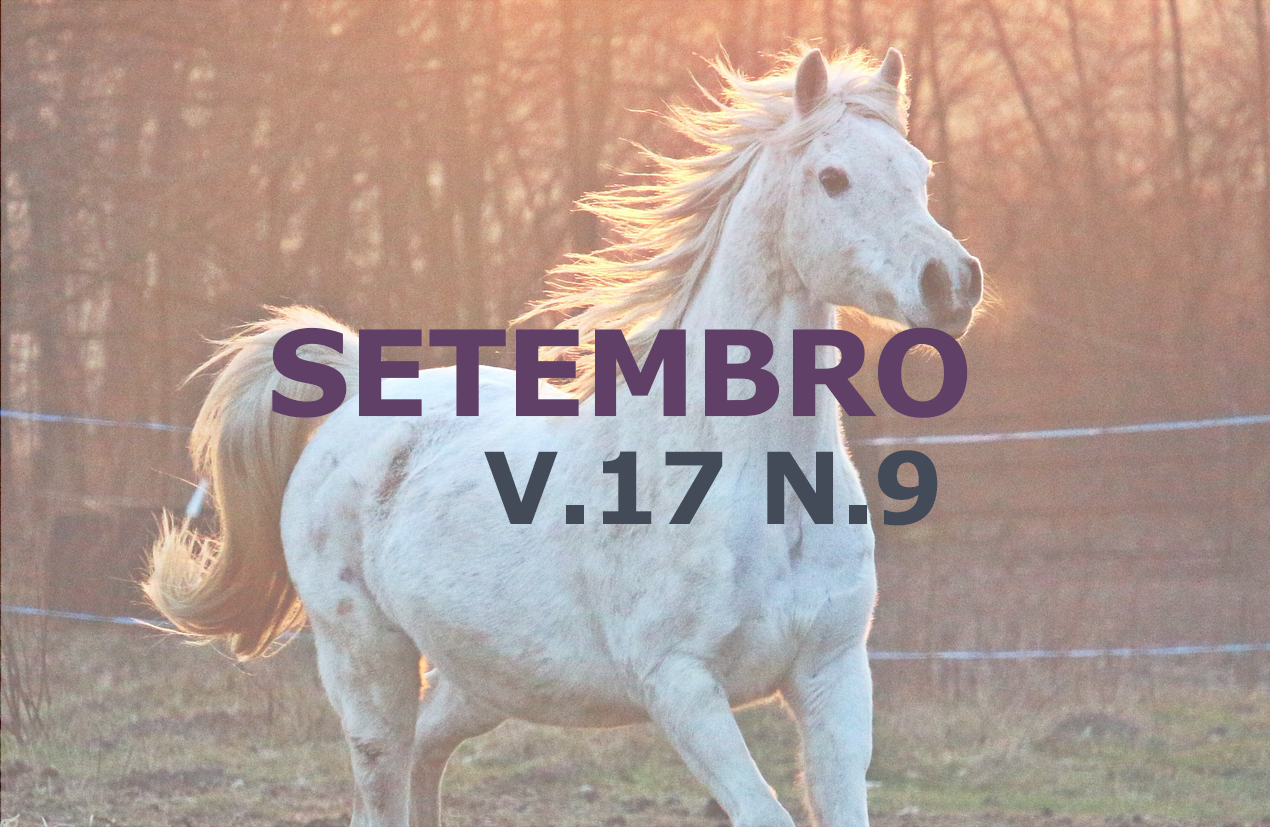Rhodococcus equi infection in a foal: Case report
DOI:
https://doi.org/10.31533/pubvet.v17n9e1444Keywords:
Bronchopneumonia, endemic, facultative intracellular, Rhodococcus equiAbstract
Rhodococcosis is a zoonotic disease caused by Rhodococcus equi, and it is considered the major cause of bronchopneumonia in foals under six months old. This affliction comprises high rates of morbidity and mortality in horses, mainly in foals less than one month old. In humans, this illness only affects individuals who are immunosuppressed. Rhodococcus equi is an opportunistic, facultative intracellular, gram-positive bacterium that multiplies inside macrophages, and has the characteristic of being endemic to horse breeding farms due to the easiness with which it multiplies and lives on the soil, which is one of the factors responsible for the large distribution of this disease. The premature diagnosis with hematological exams, PCR, and imaging exams such as chest ultrasound and chest radiography, are essential to the disease’s prognosis. The treatment is based on the use of antimicrobials. Nonetheless, the bacterium is highly resistant to them, a factor that hinders the action of the therapy. The objective of this data survey was to discuss the high incidence of Rhodococcus equi infections that compromise foals, and to present a case of chronic rhodococcosis in a two-month-old foal, reporting mostly the clinical history and the drugs used during treatment, until the resolution of the case and the foal’s discharge.
References
Basso, D. P., Balzan, V. Z., Schrenk, R. D., Santos, J. L. L., & Cardoso, J. S. (2022). Suspeita de infecção por Rhodococcus equi em pônei neonato: relato de caso. Salão do Conhecimento, 8(8).
Coelho, H. E., Santos, R. L., & Alessi, A. C. (2016). Patologia veterinária. Roca Ltda.
Dawson, T. R. M. Y., Horohov, D. W., Meijer, W. G., & Muscatello, G. (2010). Current understanding of the equine immune response to Rhodococcus equi. An immunological review of R. equi pneumonia. Veterinary Immunology and Immunopathology, 135(1–2), 1–11. https://doi.org/10.1016/j.vetimm.2009.12.004.
Giguère, S., Berghaus, L. J., & Lee, E. A. (2015). Activity of 10 antimicrobial agents against intracellular Rhodococcus equi. Veterinary Microbiology, 178(3–4), 275–278.
Giguère, S., Cohen, N. D., Keith Chaffin, M., Slovis, N. M., Hondalus, M. K., Hines, S. A., & Prescott, J. F. (2011). Diagnosis, treatment, control, and prevention of infections caused by Rhodococcus equi in foals. Journal of Veterinary Internal Medicine, 25(6), 1209–1220.
Godoi, V. E. T. (2018). Infecção por Rhodococcus equi em oito Potros. Universidade Federal de Uberlândia.
Kumar, S., Dedar, R. K., & Gupta, K. K. (2020). Rhodococcus equi infection in foals–an update. Indian Journal Veterinary Medicine, 40, 1–10.
Meijer, W., & Prescott, J. (2004). Rhodococcus equi. Veterinary Research, 35(4), 383–396. https://doi.org/10.1016/B978-1-4160-2406-4.50037-5.
Muscatello, G., Leadon, D. P., Klay, M., Ocampo‐Sosa, A., Lewis, D. A., Fogarty, U., Buckley, T., Gilkerson, J. R., Meijer, W. G., & Vazquez‐Boland, J. A. (2007). Rhodococcus equi infection in foals: the science of ‘rattles.’ Equine Veterinary Journal, 39(5), 470–478. https://doi.org/10.2746/042516407X209217.
Oliver, O. J., & Castañeda, R. (2014). Rhodococcus equi pneumonia in a Foal-A case report. Revista Colombiana de Ciencias Pecuarias, 27(2), 139–144.
Passamonti, F., Vardi, D. M., Stefanetti, V., Marenzoni, M. L., Prato, S., Cévese, P., Coletti, M., Pepe, M., Proietti, P. C., & Olea-Popelka, F. (2015). Rhodococcus equi pneumonia in foals: an assessment of the early diagnostic value of serum amyloid A and plasma fibrinogen concentrations in equine clinical practice. The Veterinary Journal, 203(2), 211–218.
Porto, A. C. R. C., Fernandes, W. R., & Barreira, M. C. R. (2011). Rhodococcus equi Parte 2-imunologia e profilaxia. Ciência Rural, 41(12), 2151–2158. https://doi.org/10.1590/s0103-84782011001200017.
Prescott, J. F. (1991). Rhodococcus equi: An animal and human pathogen. Clinical Microbiology Reviews, 4(1), 20–34. https://doi.org/10.1128/CMR.4.1.20.
Reed, S. M., Bayly, W. M., & Sellon, D. C. (2022). Medicina interna equina. Guanabara Koogan S.A.
Reuss, S. M., & Giguère, S. (2015). Update on bacterial pneumonia and pleuropneumonia in the adult horse. Veterinary Clinics: Equine Practice, 31(1), 105–120. https://doi.org/10.1016/j.cveq.2014.11.002.
Rossi, M. S. (2011). Rodococose equina: uma revisão com ênfase na fisiopatogenia e tratamento. Universidade Estadual Paulista (UNESP).
Spinosa, H. S. (2011). Antibióticos bacteriostáticos que interferem na síntese proteica: Macrolídios, Lincosamidas, Pleuromutilinas, Estreptograminas, Tetraciclinas, Cloranfenicol e Derivados. In H. S. Spinosa, S. L. Górniak, & M. M. Bernardi (Eds.), Farmacologia aplicada à medicina veterinária (5a ed., pp. 464–473). Koogan Guanabara.
Takai, S. (1997). Epidemiology of Rhodococcus equi infections: a review. Veterinary Microbiology, 56(3–4), 167–176. https://doi.org/10.1016/S0378-1135(97)00085-0.
Yamshchikov, A. V, Schuetz, A., & Lyon, G. M. (2010). Rhodococcus equi infection. The Lancet Infectious Diseases, 10(5), 350–359. https://doi.org/10.1016/S1473-3099(10)70068-2.
Downloads
Published
Issue
Section
License
Copyright (c) 2023 Rafael dos Santos Megale, Estefany Zerbeto Basilio Lino, Amanda Ribeiro

This work is licensed under a Creative Commons Attribution 4.0 International License.
Você tem o direito de:
Compartilhar — copiar e redistribuir o material em qualquer suporte ou formato
Adaptar — remixar, transformar, e criar a partir do material para qualquer fim, mesmo que comercial.
O licenciante não pode revogar estes direitos desde que você respeite os termos da licença. De acordo com os termos seguintes:
Atribuição
— Você deve dar o crédito apropriado, prover um link para a licença e indicar se mudanças foram feitas. Você deve fazê-lo em qualquer circunstância razoável, mas de nenhuma maneira que sugira que o licenciante apoia você ou o seu uso. Sem restrições adicionais
— Você não pode aplicar termos jurídicos ou medidas de caráter tecnológico que restrinjam legalmente outros de fazerem algo que a licença permita.





